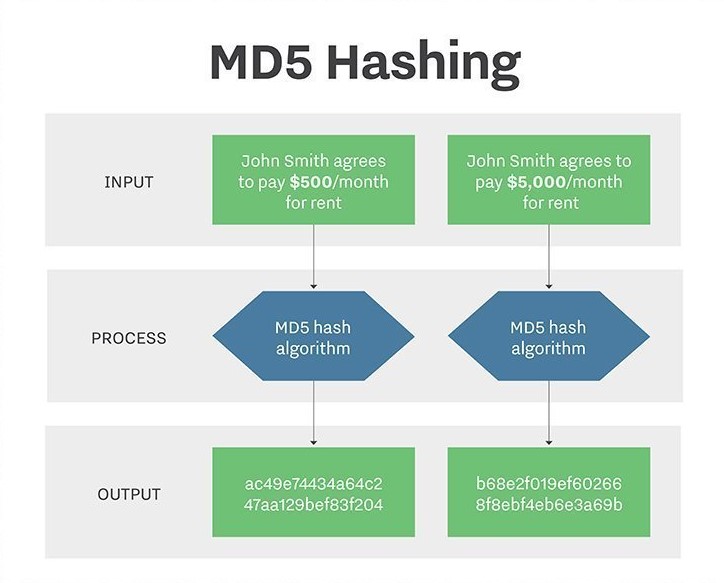
How To Paraphrase Using AI Without Getting Detected

In the rapidly evolving landscape of artificial intelligence and natural language processing, the ability to paraphrase text has become increasingly sophisticated. AI-powered paraphrasing tools have emerged as powerful allies for writers, students, and professionals seeking to rephrase content efficiently. However, with this advancement comes the challenge of using these tools effectively while avoiding detection by plagiarism checkers and maintaining the integrity of the original message. This article delves into the intricacies of AI-powered paraphrasing, exploring techniques and strategies to leverage this technology without compromising authenticity or risking detection.
The art of paraphrasing, once a purely human skill, has been transformed by the introduction of AI algorithms capable of understanding and reformulating text. These AI systems, built on advanced machine learning models and vast language databases, can quickly generate alternative versions of a given text. While this technology offers tremendous benefits in terms of time-saving and linguistic creativity, it also raises questions about originality, academic integrity, and the potential for misuse. As we explore the methods for effective AI paraphrasing, we'll also address the ethical considerations and best practices to ensure responsible use of these powerful tools.
Understanding AI-Powered Paraphrasing
AI-powered paraphrasing tools utilize sophisticated natural language processing (NLP) algorithms to analyze and rewrite text. These systems are typically based on large language models trained on extensive datasets of human-written text. By understanding the context, semantics, and structure of the input text, AI paraphrasers can generate alternative versions that maintain the original meaning while altering the wording and sentence structure.
The core technology behind most AI paraphrasing tools involves techniques such as deep learning, transformer models, and neural networks. These technologies enable the AI to not only replace individual words with synonyms but also to restructure sentences and paragraphs in a way that mimics human writing patterns. Advanced AI paraphrasers can even adapt their output to different writing styles, levels of formality, and target audiences.
However, it's important to note that while these tools are highly advanced, they are not infallible. The quality of the paraphrased output can vary depending on the complexity of the original text, the specific AI model used, and the nuances of language that may be difficult for machines to fully grasp. Understanding these limitations is crucial for effectively using AI paraphrasing tools without detection.
Techniques for Undetectable AI Paraphrasing
To use AI paraphrasing tools without detection, it's essential to employ a combination of techniques that go beyond simple word substitution. Here are some advanced methods to consider:
- Semantic Restructuring: Instead of focusing solely on replacing words, use AI tools that can rearrange the semantic structure of sentences. This involves changing the order of ideas presented in a paragraph or restructuring complex sentences into simpler ones (or vice versa). By altering the flow of information while maintaining the core meaning, the paraphrased text becomes more distinct from the original.
- Contextual Synonyms: Utilize AI models that understand context to select synonyms that are appropriate for the specific subject matter and tone of the text. Generic synonym replacement can often lead to awkward phrasing or inaccuracies, especially in specialized fields. Advanced AI tools can choose contextually appropriate alternatives that maintain the precise meaning and style of the original text.
- Phrase-Level Paraphrasing: Focus on paraphrasing at the phrase level rather than word-by-word. This approach involves identifying key phrases in the original text and finding alternative ways to express the same ideas. AI tools that can process and rephrase entire phrases are more likely to produce natural-sounding results that are less likely to be flagged by detection systems.
- Style Transformation: Employ AI tools that can alter the writing style of the text. This could involve changing the level of formality, adjusting the complexity of vocabulary, or shifting between active and passive voice. By transforming the stylistic elements of the text, the paraphrased version becomes more distinct from the original while preserving the core message.
Enhancing AI Paraphrasing with Human Input
While AI paraphrasing tools have become incredibly sophisticated, the human touch remains invaluable in creating truly undetectable and high-quality paraphrased content. Incorporating human input into the AI paraphrasing process can significantly improve the results and reduce the risk of detection. Here are some strategies for effectively combining AI capabilities with human expertise:
First, use AI as a starting point rather than a final solution. Allow the AI tool to generate an initial paraphrased version of the text, but treat this as a draft. Review the AI-generated content carefully, looking for areas where the meaning might have been altered or where the phrasing sounds unnatural. Use your own knowledge and writing skills to refine and improve upon the AI's output.
Second, focus on maintaining coherence and flow. AI tools may sometimes struggle with maintaining the logical progression of ideas, especially in longer texts. As a human editor, pay close attention to the overall structure and coherence of the paraphrased content. Ensure that transitions between ideas are smooth and that the text reads naturally from start to finish.
Third, inject your own insights and examples. One of the most effective ways to make paraphrased content unique is to incorporate your own thoughts, examples, or additional information. This not only helps to avoid detection but also adds value to the content, making it more original and insightful.
Avoiding Common AI Paraphrasing Pitfalls
Even with advanced AI tools and human oversight, there are several common pitfalls that can lead to detection or poor-quality paraphrasing. Being aware of these issues and knowing how to avoid them is crucial for successful AI-assisted paraphrasing.
One common issue is over-reliance on synonym replacement. While changing individual words is part of paraphrasing, excessive use of this technique can result in awkward or unnatural-sounding text. Moreover, many plagiarism detection tools are designed to identify this type of superficial paraphrasing. Instead, focus on rephrasing entire concepts and ideas rather than just swapping out words.
Another pitfall is the loss of nuance or specialized terminology. In fields with specific jargon or technical terms, AI paraphrasers might replace these with more general language, potentially altering the precise meaning of the text. When working with specialized content, it's essential to review the paraphrased version carefully to ensure that key terms and concepts are preserved accurately.
Maintaining consistent tone and style throughout the paraphrased text can also be challenging when using AI tools. Inconsistencies in voice, formality, or terminology can be red flags for detection. To address this, consider using AI tools that allow you to specify a particular style or tone, and carefully review the output to ensure consistency.
Ethical Considerations and Best Practices
While discussing techniques for undetectable AI paraphrasing, it's crucial to address the ethical implications and promote responsible use of this technology. The goal of paraphrasing should be to reformulate ideas in your own words while giving proper credit to the original source, not to plagiarize or misrepresent someone else's work as your own.
When using AI paraphrasing tools, always start by clearly understanding the purpose of your paraphrasing. If you're using these tools for academic or professional writing, be sure to follow the appropriate citation guidelines and academic integrity policies of your institution or industry. In many cases, it's not just about avoiding detection, but about using paraphrasing as a tool to better understand and engage with the original material.
Transparency is key when it comes to AI-assisted writing. If you're using AI tools to help with paraphrasing, consider acknowledging this in your work, especially in academic or professional contexts where the use of such tools may be relevant information for your readers or evaluators.
Additionally, use AI paraphrasing as part of a broader research and writing process, not as a shortcut to bypass genuine engagement with the subject matter. The most effective and ethical use of these tools involves combining AI assistance with your own critical thinking, analysis, and original insights.
Staying Updated with AI and Detection Technologies
The field of AI language processing and plagiarism detection is rapidly evolving. To continue paraphrasing effectively without detection, it's essential to stay informed about the latest developments in both AI writing tools and detection technologies.
Keep abreast of updates to popular AI paraphrasing tools and new entries in the market. Many of these tools regularly improve their algorithms, offering new features that can help create more natural and varied paraphrases. Similarly, stay informed about advancements in plagiarism detection software. Understanding the capabilities of these detection tools can help you refine your paraphrasing techniques to stay ahead of detection methods.
Consider joining online communities or forums where writers and researchers discuss AI writing tools and techniques. These can be valuable sources of information on new strategies, tool recommendations, and best practices for using AI in writing and paraphrasing.
Balancing AI Assistance with Original Thinking
While AI paraphrasing tools can be incredibly useful, they should complement rather than replace original thinking and writing skills. The most effective approach to undetectable paraphrasing involves using AI as a tool to enhance your own writing process, not as a crutch to avoid engaging with the material.
Start by thoroughly understanding the original text. Before using any AI tool, read and analyze the content you want to paraphrase. Develop your own interpretation and identify the key points you want to convey. Use this understanding to guide your use of AI paraphrasing tools and to critically evaluate their output.
Experiment with different AI tools and settings to find the approach that best suits your writing style and needs. Some tools may be better suited for certain types of content or writing styles than others. By familiarizing yourself with various options, you can choose the most appropriate tool for each paraphrasing task.
Finally, always review and refine the AI-generated content. Use your own knowledge and writing skills to improve upon the AI's output, ensuring that the final product reflects your own voice and understanding of the subject matter.
Conclusion
AI-powered paraphrasing tools have revolutionized the way we approach the task of rephrasing and reformulating text. When used skillfully and ethically, these tools can be powerful aids in writing, research, and content creation. The key to using AI for undetectable paraphrasing lies in combining the capabilities of advanced AI models with human insight, creativity, and critical thinking.
By employing techniques such as semantic restructuring, contextual synonym replacement, and style transformation, and by carefully avoiding common pitfalls, it's possible to create paraphrased content that is both original and true to the source material. However, it's crucial to remember that the goal of paraphrasing should always be to engage more deeply with ideas and express them in your own words, not to deceive or misrepresent. As AI technology continues to advance, staying informed and adaptable will be essential for those seeking to leverage these tools effectively and responsibly in their writing and research endeavors.

